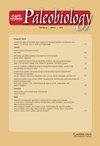以鳞鳃亚纲动物为模型,将古生物学研究与保护优先事项相结合
IF 2.7
2区 地球科学
Q2 BIODIVERSITY CONSERVATION
引用次数: 0
摘要
在过去的几千年里,人类极大地改变了生态系统,并有可能造成与其他影响生命历史的大灭绝事件相媲美的大灭绝事件。然而,这些影响中只有一小部分被直接记录下来,限制了保护行动。保护性古生物学利用地质历史记录,从长远角度研究生物多样性在人为压力下的变化。然而,该领域对保护成果的实地贡献仍在发展之中。在此,我们以鳞鳃亚纲动物(鲨鱼、鳐鱼和鳐科鱼类)--一个具有丰富化石记录的高度濒危类群--为范例,概述了古生物学研究在未来几十年中帮助保护工作的发展方向。这些研究方向以专家主导的当前鳞鳃类动物保护优先事项清单与现有化石和历史记录之间的重叠领域为指导。古生物学研究可以解决贻贝科学和保护中的四个研究课题:(1) 基线,(2) 生态作用,(3) 威胁,(4) 保护重点。日益丰富的数据集和新颖的分析框架为将箭亚纲化石记录应用于保护实践提供了令人兴奋的机会。类似的方法也可以扩展到其他类群。鉴于这些研究课题的综合性质,我们鼓励与保护工作者开展跨时间尺度的合作,以保护地球上正在迅速消失的物种的未来。本文章由计算机程序翻译,如有差异,请以英文原文为准。
Aligning paleobiological research with conservation priorities using elasmobranchs as a model
Humans have dramatically transformed ecosystems over the previous millennia and are potentially causing a mass extinction event comparable to the others that shaped the history of life. However, only a fraction of these impacts has been directly recorded, limiting conservation actions. Conservation paleobiology leverages geohistorical records to offer a long-term perspective on biodiversity change in the face of anthropogenic stressors. Nevertheless, the field's on-the-ground contributions to conservation outcomes are still developing. Here, we present an overview of directions in which paleobiological research could progress to aid conservation in the coming decades using elasmobranchs (sharks, rays, and skates)—a highly threatened group with a rich fossil record—as a model. These research directions are guided by areas of overlap between an expert-led list of current elasmobranch conservation priorities and available fossil and historical records. Four research topics emerged for which paleobiological research could address open questions in elasmobranch science and conservation: (1) baselines, (2) ecological roles, (3) threats, and (4) conservation priorities. Increasingly rich datasets and novel analytical frameworks present exciting opportunities to apply the elasmobranch fossil record to conservation practice. A similar approach could be extended to other clades. Given the synthetic nature of these research topics, we encourage collaboration across timescales and with conservation practitioners to safeguard the future of our planet's rapidly disappearing species.
求助全文
通过发布文献求助,成功后即可免费获取论文全文。
去求助
来源期刊

Paleobiology
地学-古生物学
CiteScore
5.30
自引率
3.70%
发文量
38
审稿时长
>12 weeks
期刊介绍:
Paleobiology publishes original contributions of any length (but normally 10-50 manuscript pages) dealing with any aspect of biological paleontology. Emphasis is placed on biological or paleobiological processes and patterns, including macroevolution, extinction, diversification, speciation, functional morphology, bio-geography, phylogeny, paleoecology, molecular paleontology, taphonomy, natural selection and patterns of variation, abundance, and distribution in space and time, among others. Taxonomic papers are welcome if they have significant and broad applications. Papers concerning research on recent organisms and systems are appropriate if they are of particular interest to paleontologists. Papers should typically interest readers from more than one specialty. Proposals for symposium volumes should be discussed in advance with the editors.
 求助内容:
求助内容: 应助结果提醒方式:
应助结果提醒方式:


